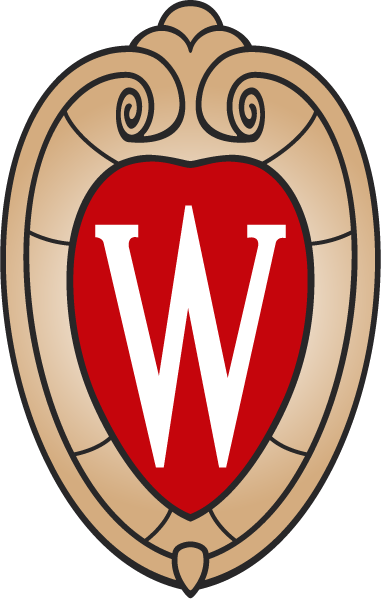
Coordinated Fire Protection Sprinkler and Fire Alarm Systems
interpro.wisc.edu/RA01547 See upcoming datesCourse Overview
Often the components of a fully functioning fire protection system in a building are designed or installed by different engineering disciplines or sub-contractor trades. This course will provide a survey of the essential elements for both fire detection and suppression, to help designers and installers coordinate their work. The course will also help you interpret the fire protection requirements published in various codes by the National Fire Protection Association (NFPA) and the International Code Council (ICC).
Who Should Attend?
- Fire protection engineers
- HVAC and plumbing consultants
- Electrical building system designers
- Construction managers and contractors
- Architects and project team members
- Plans and specification reviewers
- Fire inspectors and code officials
- Owner’s project representatives
- Facilities operations supervisors
Course Outline
Day One
Welcome and Introduction
Basic Fire Safety Concepts
- Fire safety goals
- NFPA 550
Major Codes and Standards
- Fire protection system design
- Authority Having Jurisdiction (AHJ)
- Model codes
- Referenced publications
- Building code tradeoffs
HVAC System Requirements
- Applicable codes and standards
- Duct smoke detection
- Smoke management systems
- Smoke containment systems
- Some and fire dampers
Fire Sprinkler Systems
- Introduction and overview
- System types
- Components
- General requirements
- Commodities and occupancies
- Design approach
- Pipe support and hangers
Day Two
Standpipe System
- Introduction and overview
- System types
- Components
- Design
Overview of Hydraulics and Fire Pumps
- Introduction
- Pressure loss formulas
- Design process
- Hydraulic calculations
- Fire pump selection
- Hydraulics worksheet
Fire Alarm System Features
- Smoke and heat detection planning
- Common spacing rules
- Heat detector types
- Heat detector layout
- Smoke detectors
- ionization
- photoelectric
- projected beam
- air sampling
- duct smoke detectors
- Zoned initiating devices
- Addressable initiating devices
Coordinated System Operation
- Sprinkler water flow alarms
- Other extinguishing systems
- Supervisory signals and devices
- Elevator recall and controls
- Emergency communication
- Commissioning and integrated testing
Day Three
Alternate Suppression Systems
- High pressure mist
- droplet size and surface area
- cooling and oxygen displacement
- pump and piping distribution
- Automatic gas suppression
- principle of operation
- clean agent options
- tank storage
Special Facility Considerations
- Assembly occupancies
- Industrial / Storage
- Hospitals - NFPA 99
- Labs - NFPA 45
- Data centers - NFPA 75
- Cultural resources - NFPA 909
Testimonials
“As an AHJ/inspector, it is valuable to have a general idea of sprinkler and alarm system design. The knowledge gained in this class will help me understand plans and provide a knowledge base of how and why in the field.” He then went on the write “Wonderful course – very happy I was able to attend. I plan on budgeting for these courses in the future. Very knowledgeable speakers – incredibly intelligent!” —Pete Fletty, Marshfield Fire and Rescue Department, Marshfield, Wisconsin
"For anyone that is involved in plan review, designs, and inspections, this course was well worth the time. Especially if you're the successor of a bureau. Also, information can be shared with dept. members...Overall one of the best classes I've taken."
—Michael, Lieutenant, Fire Prevention, West Allis Fire Department, West Allis, Wisconsin
"A lot of great information and insight. I liked that the fire departments were involved. The presenters were both very engaging and good. I really enjoyed that this class gave me a little different perspective than a typical design class. I found it very beneficial."
—Jessica, Mechanical Engineer, GRAEF, Milwaukee, Wisconsin
"It was exactly what I was hoping for when signing up for the class. A basic overview of the fire protection / alarm system."
—Carlos, JDR Engineering, Madison, Wisconsin
"The knowledge / experience / presentation skills of the presenters was exceptional."
—Andy, Associate Director of Operations & Distribution, University of Connecticut, Storrs, Connecticut
Instructors
William Koffel
William Koffel, P.E., FSFPE is President of Koffel Associates, a fire protection and life safety engineering design and consulting firm, and is recognized as an expert in the fire protection and life safety aspects of codes and standards. Headquartered in the Baltimore-Washington metropolitan area and with New England and Southeast regional offices, the firm provides consulting; engineering design and construction administration; codes and standards development; seminar development and training; product testing and evaluation / representation; and litigation support to public and private clients worldwide. He remains active in the development process of the industry’s governing codes, standards and design guidelines including International Code Council (ICC), National Fire Protection Association (NFPA), Society of Fire Protection Engineers (SFPE) and Underwriters Laboratory (UL). He is a member of many NFPA Technical Committees including the NFPA Correlating Committee on Signaling Systems, and is the Chair of the NFPA Technical Committee on Emergency Communication Systems and the Committee responsible for NFPA 25. He is the immediate past Chair of the NFPA Life Safety Correlating Committee. A former code official with the Maryland State Fire Marshal’s Office, he is a Past President of the SFPE.
William (Bill) Sullivan
Bill Sullivan is the Fire Marshal for the City of Madison Fire Department (MFD). Bill oversees the Fire Prevention Division which applies state and local codes as well as multiple national standards covering everything from fire protection systems, hazardous material storage, emergency responder features, elevators, public education, emergency management and everything in between. Sullivan has worked for a fire sprinkler contractor, was the first fire suppression/fire alarm system plan reviewer for the State of WI, and worked for a world renowned fire protection engineering firm. Sullivan earned a Bachelor of Science degree in Fire & Safety Engineering from Eastern Kentucky University, is a licensed WI Commercial Building and Fire Protection Systems Inspector, chairs the Wisconsin Home Fire Sprinkler Coalition, and a chief fire officer with his local combination fire department.
